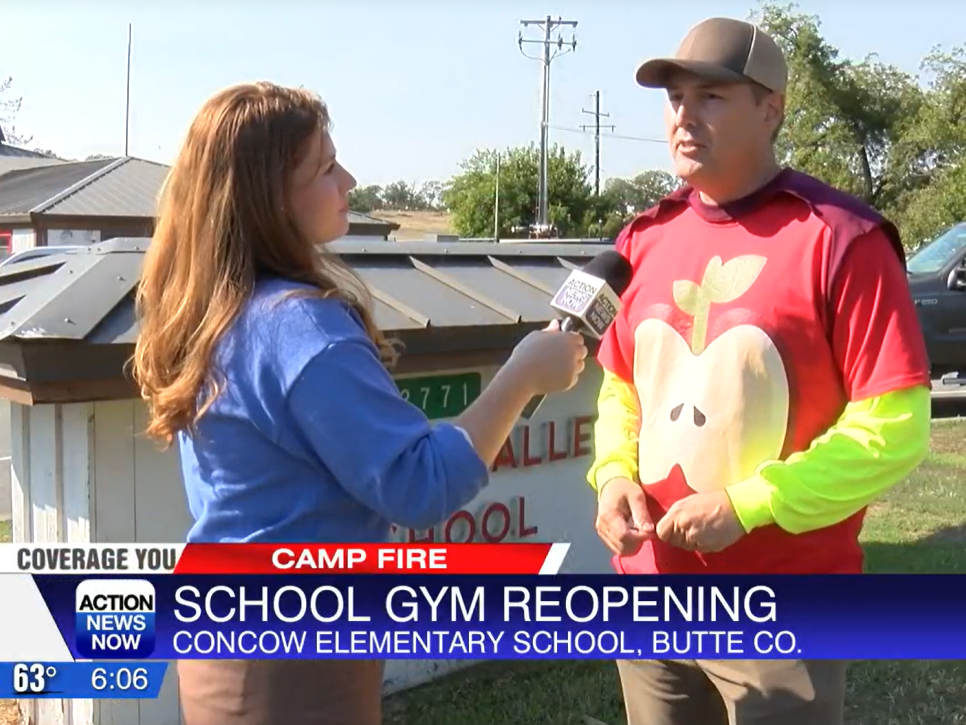In the aftermath of a major natural disaster, the challenges faced by survivors are immeasurable. Having personally experienced the devastation caused by the Camp Fire in Paradise, CA, I understand firsthand the toll such events can take on individuals and communities. The process of rebuilding lives after losing everything is daunting, and it’s crucial that we prioritize disaster preparedness education in schools to equip future generations with the knowledge and skills they need to face such situations. This is why National Disaster Preparedness Month in September holds exceptional significance. In this blog post, we will explore the importance of incorporating disaster preparedness into school curricula and delve into why September is an ideal time to do so.
Why National Disaster Preparedness Month Matters
Universal Vulnerability to Disasters
Disasters, whether natural or man-made, can strike anywhere and at any time. Hurricanes, tornadoes, earthquakes, wildfires, and other catastrophic events are not confined by geographical boundaries. Therefore, it’s essential to ensure that every student, regardless of their location, is educated about disaster preparedness. By teaching them how to plan, respond, and recover, we empower them to protect themselves, their families, and their communities.
Life-Saving Skills and Knowledge
Incorporating disaster preparedness education into school curricula provides students with life-saving skills and knowledge. They learn about creating emergency plans, assembling disaster supply kits, and understanding evacuation routes. These skills not only increase their personal safety but also contribute to building a more resilient society as a whole.
Preparation for Wildfire-Prone Areas
For areas susceptible to wildfires, September holds special significance. Late summer and fall are periods when the risk of wildfires is particularly high due to dry conditions. By integrating disaster preparedness education in schools during September, students in wildfire-prone areas can be better equipped to understand the risks, develop fire-safe behaviors, and advocate for their own safety and that of their families.
Promotion of Community Engagement
Disaster preparedness education fosters a sense of community responsibility. Schools play a pivotal role in cultivating this by encouraging students to engage with local disaster response organizations and participate in community preparedness events. When students understand the collective effort required to respond effectively to disasters, they become active contributors to their community’s resilience.
Long-Term Resilience Building
Education is a long-term investment in building resilience. By instilling disaster preparedness concepts in students’ minds, we ensure that they carry these principles with them into adulthood. This leads to a society where disaster preparedness becomes second nature, reducing panic and enhancing overall recovery efforts.
Incorporating Disaster Preparedness into School Curricula
Creating Customized Plans
Schools should develop disaster preparedness plans tailored to their specific location and potential risks. Whether it’s earthquakes, hurricanes, or wildfires, having a well-thought-out plan that accounts for all possibilities is crucial. Conducting regular drills ensures that students and staff are well-versed in their roles during emergencies.
Interactive Learning
Disaster preparedness education doesn’t have to be dry or intimidating. Engage students through interactive learning methods, such as simulations, games, and group discussions. This approach not only makes learning enjoyable but also enhances retention of critical information.
Cross-Curricular Integration
Disaster preparedness isn’t limited to science class; it can be integrated across various subjects. For instance, math classes can explore statistics related to past disasters, while language arts classes can focus on communication strategies during emergencies. This cross-curricular approach reinforces the importance of disaster preparedness in different aspects of life.
Guest Speakers and Experts
Bringing in experts from local emergency response agencies or disaster management organizations can provide students with firsthand insights into the real-world implications of disaster preparedness. Guest speakers can share personal experiences, practical tips, and case studies that resonate with students.
Project-Based Learning
Encourage students to work on projects related to disaster preparedness. This could involve creating public service announcements, designing emergency kits, or developing evacuation plans for fictional scenarios. Project-based learning fosters critical thinking, problem-solving, and creativity while reinforcing key preparedness concepts.
Preserving Personal Property and Memories
Preserving personal property and memories is a crucial aspect of disaster preparedness that often goes overlooked. Here are some practical tips:
Digital Preservation
Consider scanning important documents and photographs and store them on an external drive or in the cloud. This ensures that even if physical copies are lost, digital versions remain accessible for future use.
Insurance Review
Regularly review your insurance policies to ensure they adequately cover potential disaster scenarios. Consult with your insurance agent to clarify coverage and explore additional options if necessary.
Photographic Documentation
Taking photographs of your belongings can be invaluable when dealing with insurance claims. Detailed images help jog your memory and provide evidence of your possessions. Make it a practice to photograph every room in your home, capturing items from different angles.
Personal Inventory
Maintain a comprehensive inventory of your belongings. Include details like purchase dates, values, and serial numbers. This inventory will facilitate the claims process in the aftermath of a disaster.
Family Preparedness
Involve your family in disaster preparedness discussions. Ensure that everyone knows where important documents are stored, how to access emergency supplies, and how to communicate during a crisis.
Conclusion
National Disaster Preparedness Month in September offers a unique opportunity to integrate crucial life skills into school curricula. By equipping students with knowledge, skills, and a sense of responsibility, we can contribute to the creation of a more disaster-resilient society. Just as my personal experience underscores the importance of being prepared, schools play a pivotal role in shaping the preparedness mindset of future generations. By embracing this responsibility, educators and communities can work together to ensure that no one is caught unprepared in the face of adversity.



